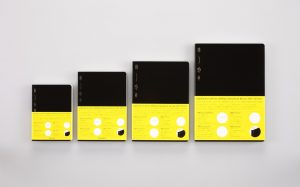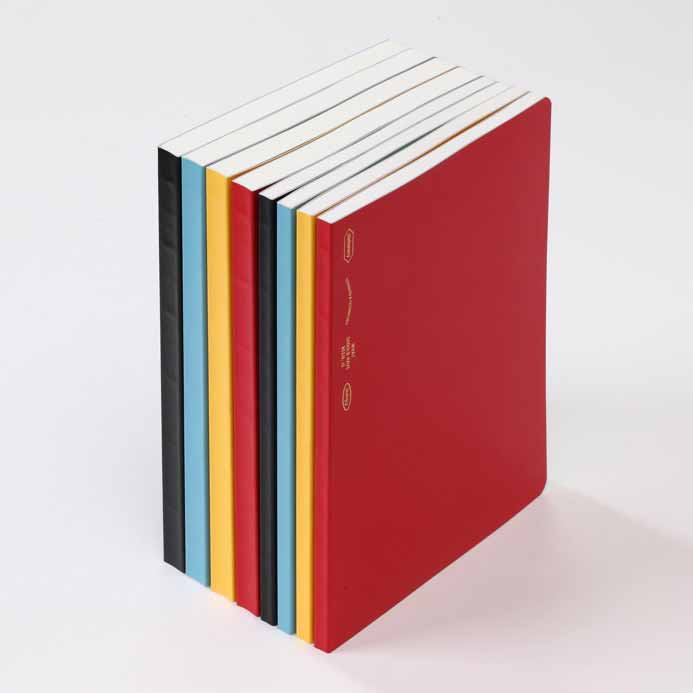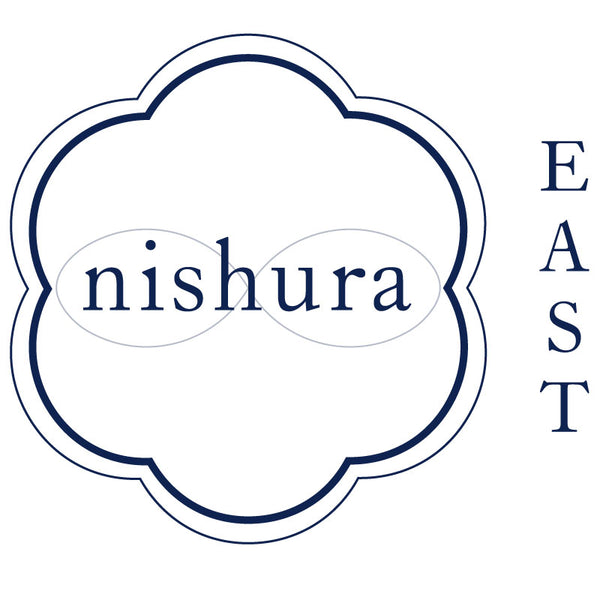 For example, inside the notebooks, the grid sizes on the pages are different between the A and B notebooks, depending on what your main tasks and needs are. The A notebooks have a 4mm grid, whereas the B notebooks have a larger 5mm grid. As you may know, Stalogy notebooks can be used as diaries, as they have a timeline on the left of each page (as well as tick-off months, dates and weekdays at the top of the page). So if you wanted to use this facility, a smaller grid would give you more space for diary notes.
The variety of notebook sizes also allows you to find exactly the right one to fit your bag or pocket – as well as the colour you like best! Personally I like to use an A5 ½ year notebook for everyday work, and then an A6 ½ year one for my holidays. I especially like the A6 ½ year, as it is such a slim and smart little notebook, and so perfect for putting down what I have done, and where I have been.
Now - which size of Stalogy notebook is your favourite?
You can see the full range of Stalogy notebooks here.
For example, inside the notebooks, the grid sizes on the pages are different between the A and B notebooks, depending on what your main tasks and needs are. The A notebooks have a 4mm grid, whereas the B notebooks have a larger 5mm grid. As you may know, Stalogy notebooks can be used as diaries, as they have a timeline on the left of each page (as well as tick-off months, dates and weekdays at the top of the page). So if you wanted to use this facility, a smaller grid would give you more space for diary notes.
The variety of notebook sizes also allows you to find exactly the right one to fit your bag or pocket – as well as the colour you like best! Personally I like to use an A5 ½ year notebook for everyday work, and then an A6 ½ year one for my holidays. I especially like the A6 ½ year, as it is such a slim and smart little notebook, and so perfect for putting down what I have done, and where I have been.
Now - which size of Stalogy notebook is your favourite?
You can see the full range of Stalogy notebooks here.
What is so special about the Stalogy B6 notebook?

We have now been working with Stalogy for around 5 years, so it’s clear what’s special about the products, and which the favourite ones are. It’s not surprising the best seller of all is the B6 365-day notebook. It’s widely known as a design classic, and a prize winner. And what’s interesting too is its size – the B6 size of paper – which is also a key to its success, as it’s such a handy size for carrying around.
The B sizes of paper are not seen much in the West, but as a Japanese person I am really familiar with them. In Japan, for instance, all the printers have A4 and B4 printer trays. So why does that happen - and what is the difference?
Most people know the A2 is half the size of A1, and A4 is half the size of A3. The B sizes work in the same way, with the B2 being half the size of the B1, and so on. Essentially, the B sizes fit roughly in between the A sizes, so that B6 is halfway in size between A5 and A6.
Although the B sizes in the West have been valuable for certain applications in the printing industry – the B7 for passports, for instance, and the B5 for books – in Japan it has had a much wider use as a popular size for many magazines, posters, newspapers and books. It was introduced to Japan in 1929 when the Japanese Engineering Standards (JES) set up parameters for new A and B sizes, initially adopting measurements from Germany, and then developing unique variants for the B series. It is still a standard size for Japanese newspapers.
The Stalogy Series of Notebooks draws on the heritage of both the A and B sizes, giving the best of both worlds, East and West, and offering a fantastic variety for our many different needs and desires.
 For example, inside the notebooks, the grid sizes on the pages are different between the A and B notebooks, depending on what your main tasks and needs are. The A notebooks have a 4mm grid, whereas the B notebooks have a larger 5mm grid. As you may know, Stalogy notebooks can be used as diaries, as they have a timeline on the left of each page (as well as tick-off months, dates and weekdays at the top of the page). So if you wanted to use this facility, a smaller grid would give you more space for diary notes.
The variety of notebook sizes also allows you to find exactly the right one to fit your bag or pocket – as well as the colour you like best! Personally I like to use an A5 ½ year notebook for everyday work, and then an A6 ½ year one for my holidays. I especially like the A6 ½ year, as it is such a slim and smart little notebook, and so perfect for putting down what I have done, and where I have been.
Now - which size of Stalogy notebook is your favourite?
You can see the full range of Stalogy notebooks here.
For example, inside the notebooks, the grid sizes on the pages are different between the A and B notebooks, depending on what your main tasks and needs are. The A notebooks have a 4mm grid, whereas the B notebooks have a larger 5mm grid. As you may know, Stalogy notebooks can be used as diaries, as they have a timeline on the left of each page (as well as tick-off months, dates and weekdays at the top of the page). So if you wanted to use this facility, a smaller grid would give you more space for diary notes.
The variety of notebook sizes also allows you to find exactly the right one to fit your bag or pocket – as well as the colour you like best! Personally I like to use an A5 ½ year notebook for everyday work, and then an A6 ½ year one for my holidays. I especially like the A6 ½ year, as it is such a slim and smart little notebook, and so perfect for putting down what I have done, and where I have been.
Now - which size of Stalogy notebook is your favourite?
You can see the full range of Stalogy notebooks here.
 For example, inside the notebooks, the grid sizes on the pages are different between the A and B notebooks, depending on what your main tasks and needs are. The A notebooks have a 4mm grid, whereas the B notebooks have a larger 5mm grid. As you may know, Stalogy notebooks can be used as diaries, as they have a timeline on the left of each page (as well as tick-off months, dates and weekdays at the top of the page). So if you wanted to use this facility, a smaller grid would give you more space for diary notes.
The variety of notebook sizes also allows you to find exactly the right one to fit your bag or pocket – as well as the colour you like best! Personally I like to use an A5 ½ year notebook for everyday work, and then an A6 ½ year one for my holidays. I especially like the A6 ½ year, as it is such a slim and smart little notebook, and so perfect for putting down what I have done, and where I have been.
Now - which size of Stalogy notebook is your favourite?
You can see the full range of Stalogy notebooks here.
For example, inside the notebooks, the grid sizes on the pages are different between the A and B notebooks, depending on what your main tasks and needs are. The A notebooks have a 4mm grid, whereas the B notebooks have a larger 5mm grid. As you may know, Stalogy notebooks can be used as diaries, as they have a timeline on the left of each page (as well as tick-off months, dates and weekdays at the top of the page). So if you wanted to use this facility, a smaller grid would give you more space for diary notes.
The variety of notebook sizes also allows you to find exactly the right one to fit your bag or pocket – as well as the colour you like best! Personally I like to use an A5 ½ year notebook for everyday work, and then an A6 ½ year one for my holidays. I especially like the A6 ½ year, as it is such a slim and smart little notebook, and so perfect for putting down what I have done, and where I have been.
Now - which size of Stalogy notebook is your favourite?
You can see the full range of Stalogy notebooks here.
